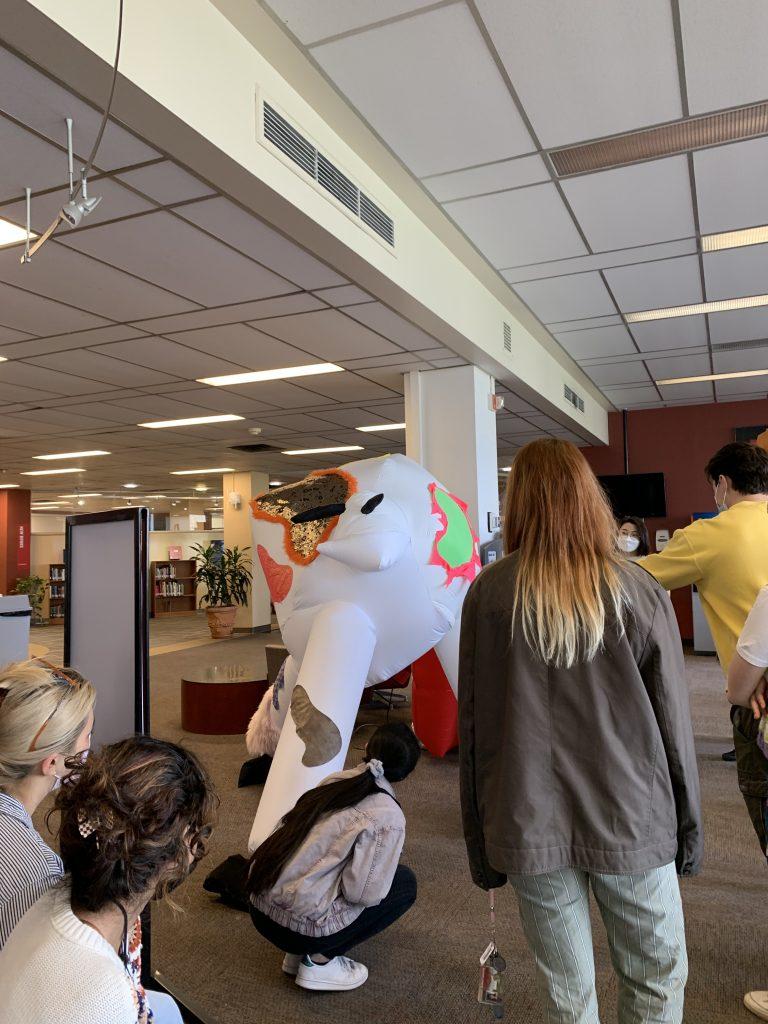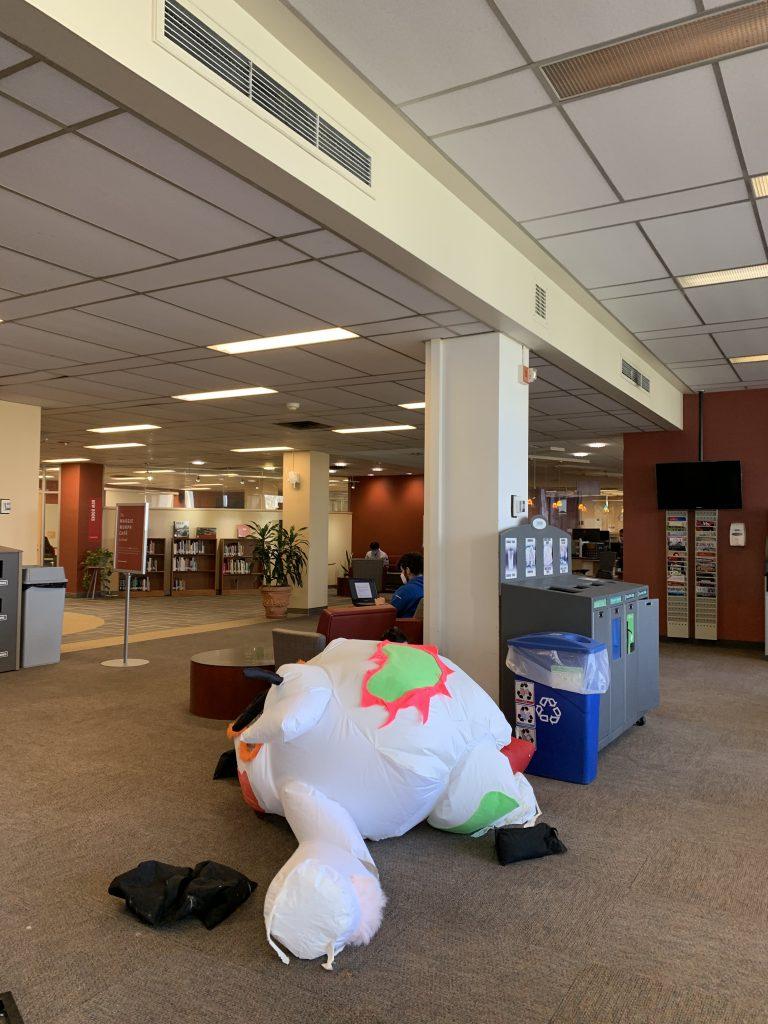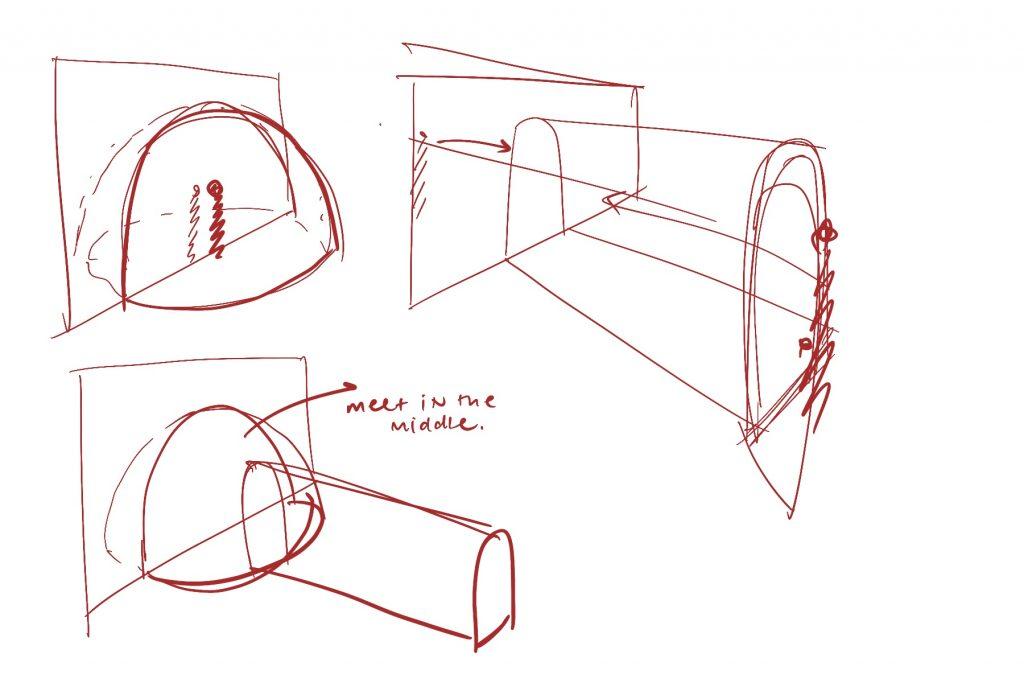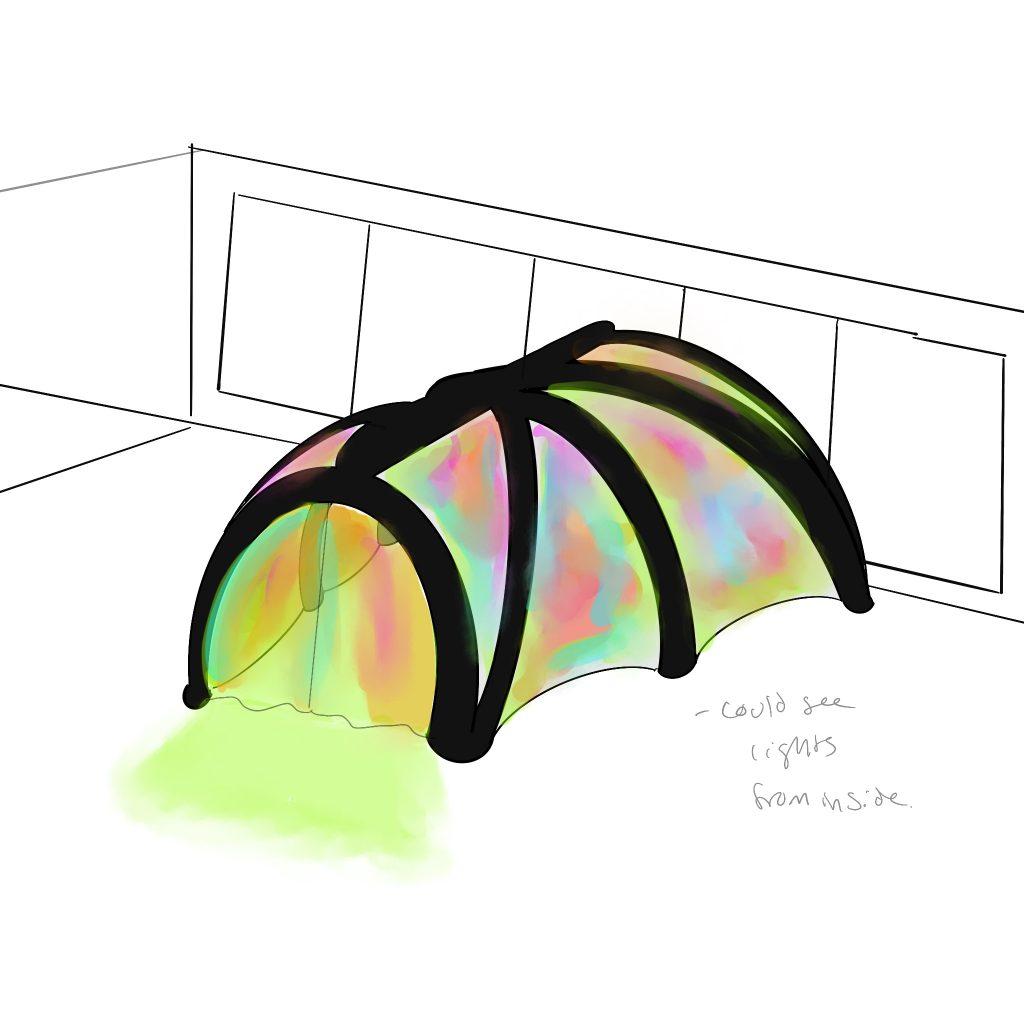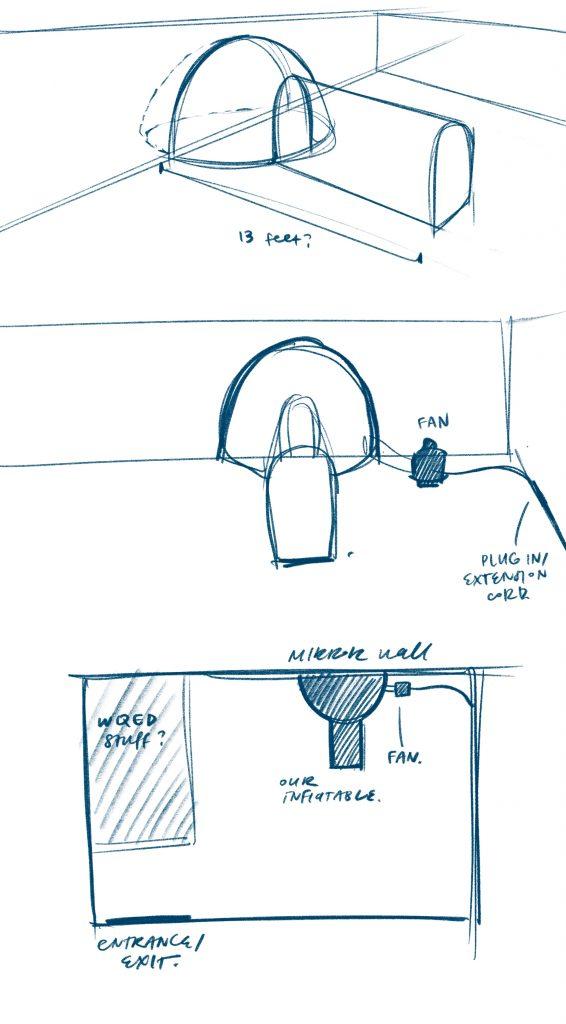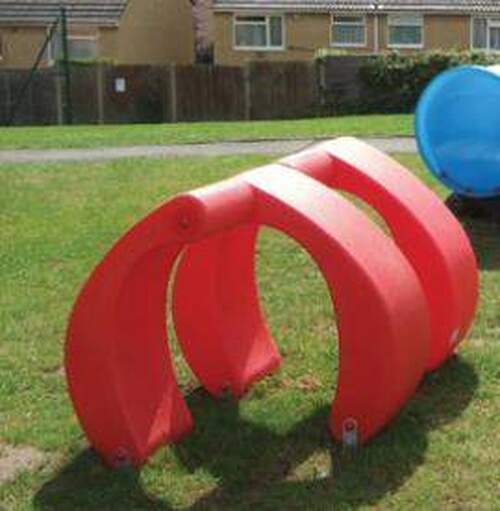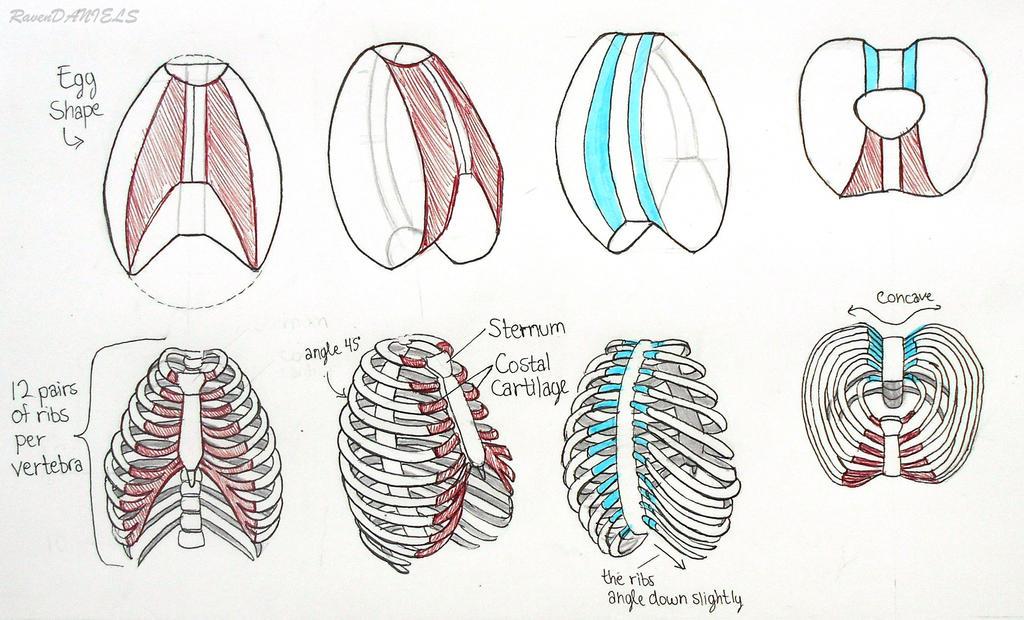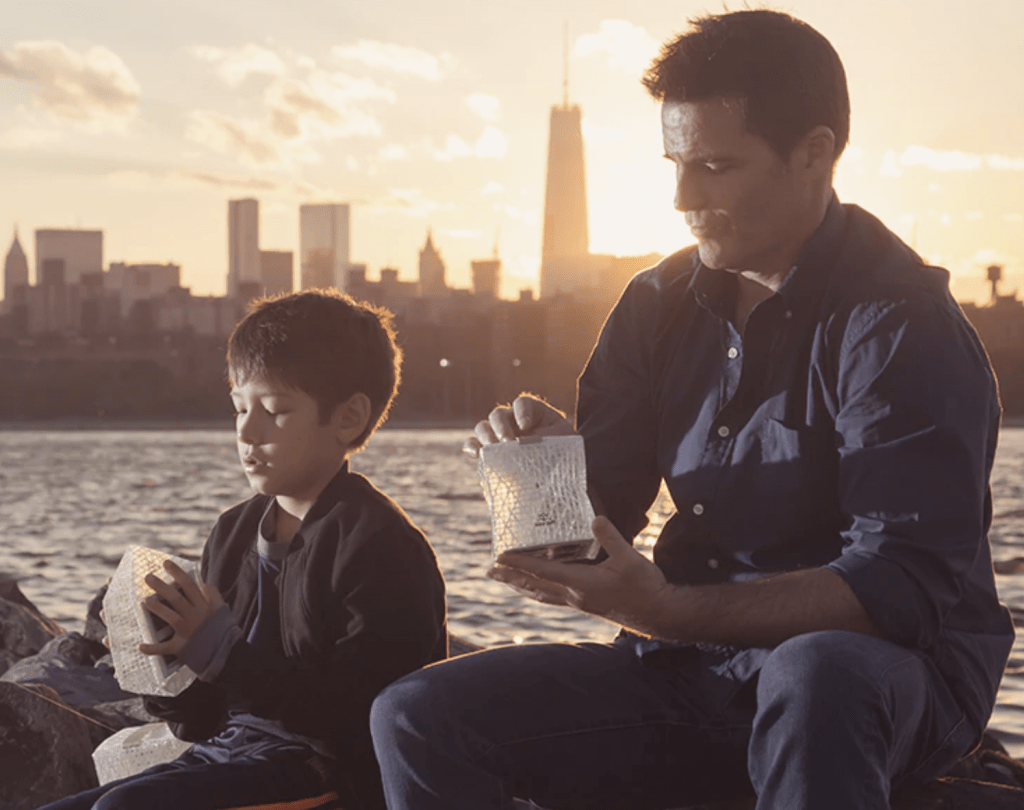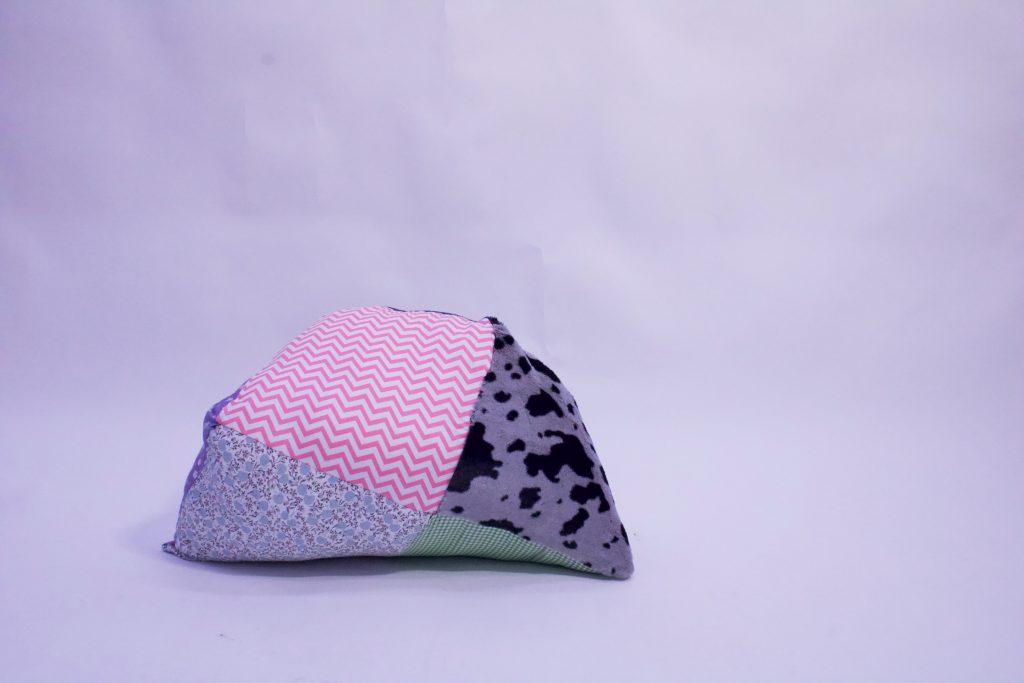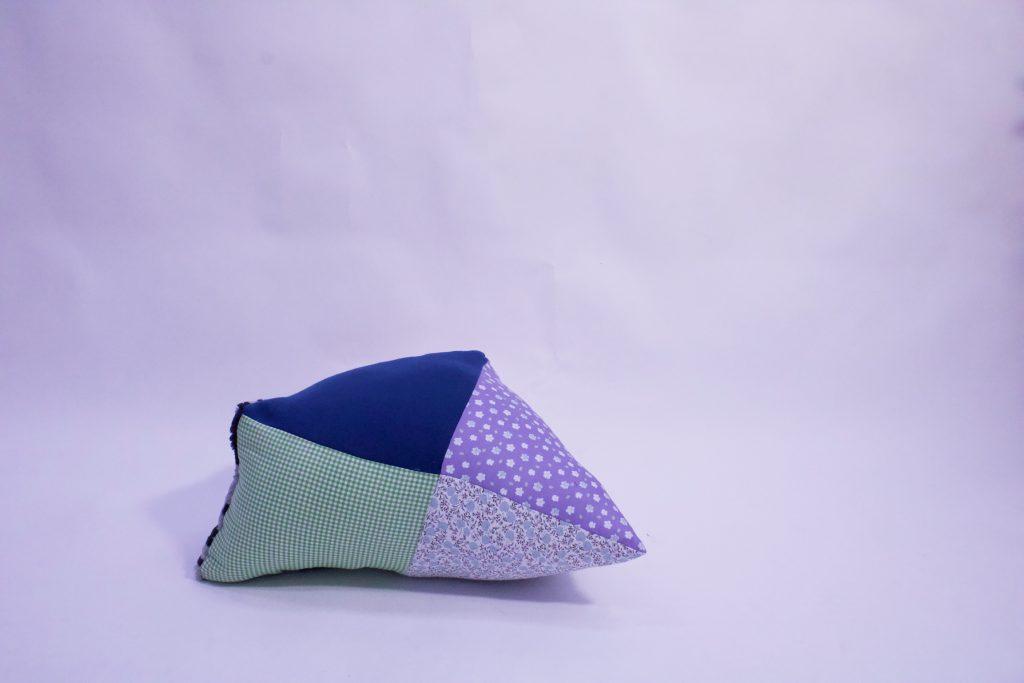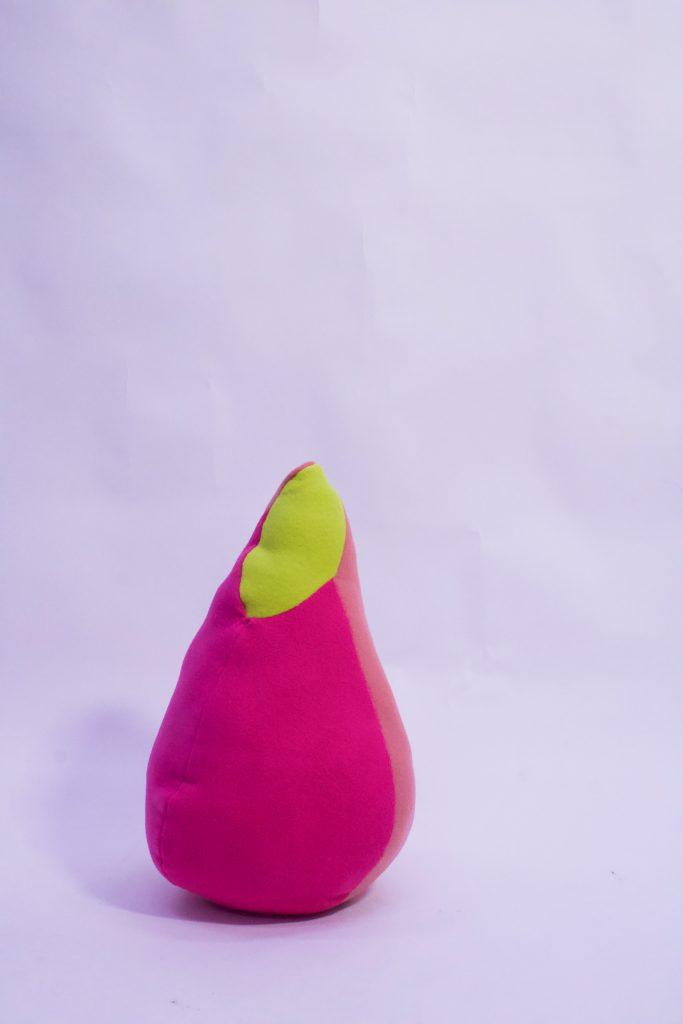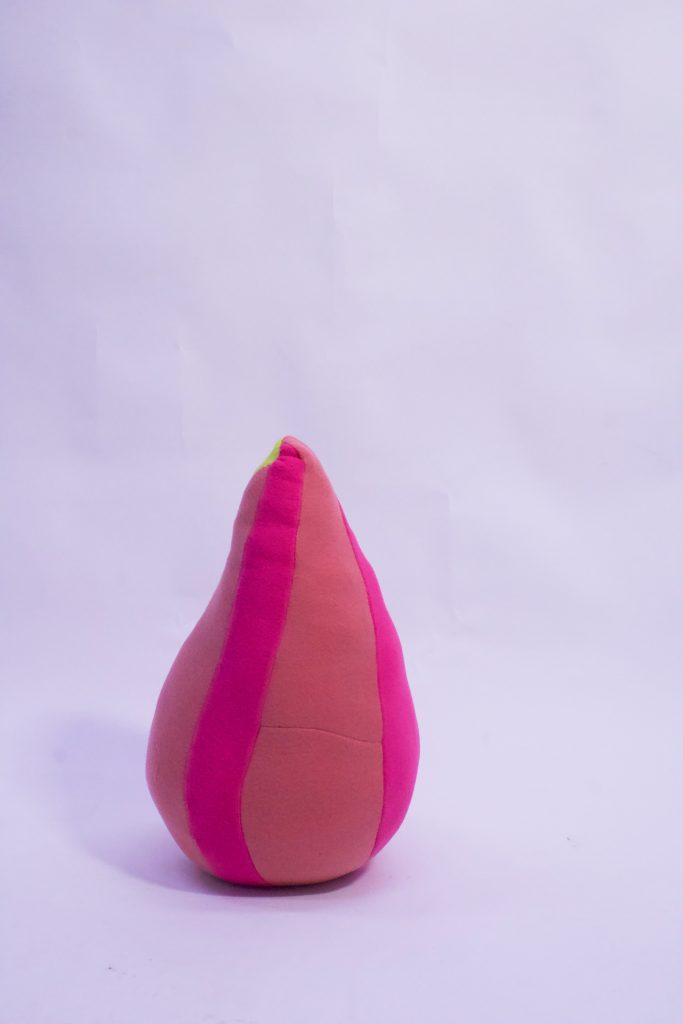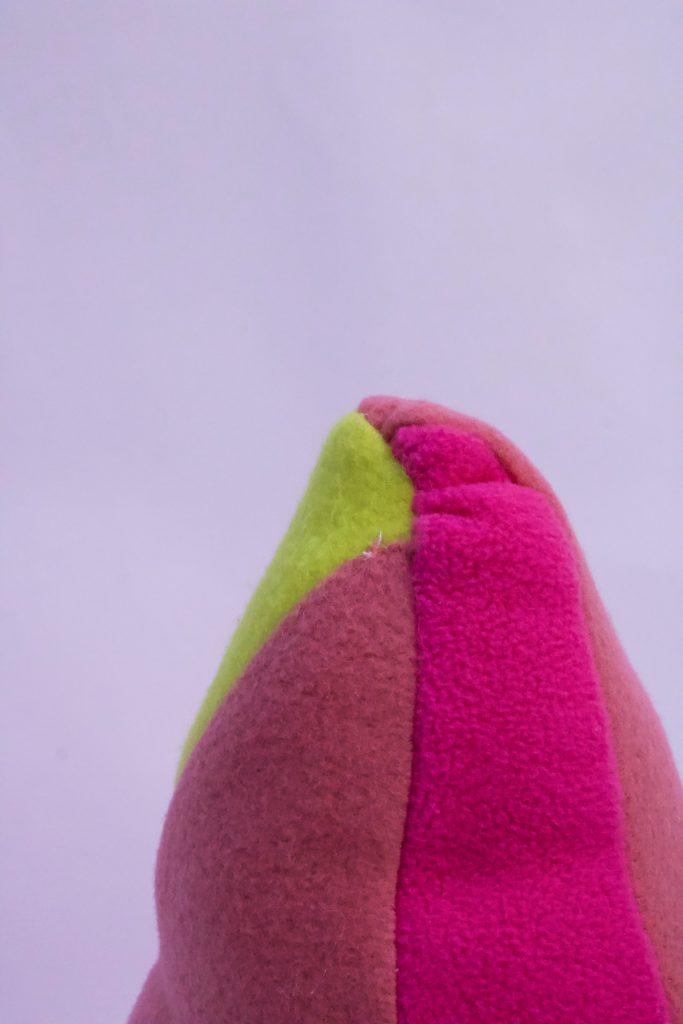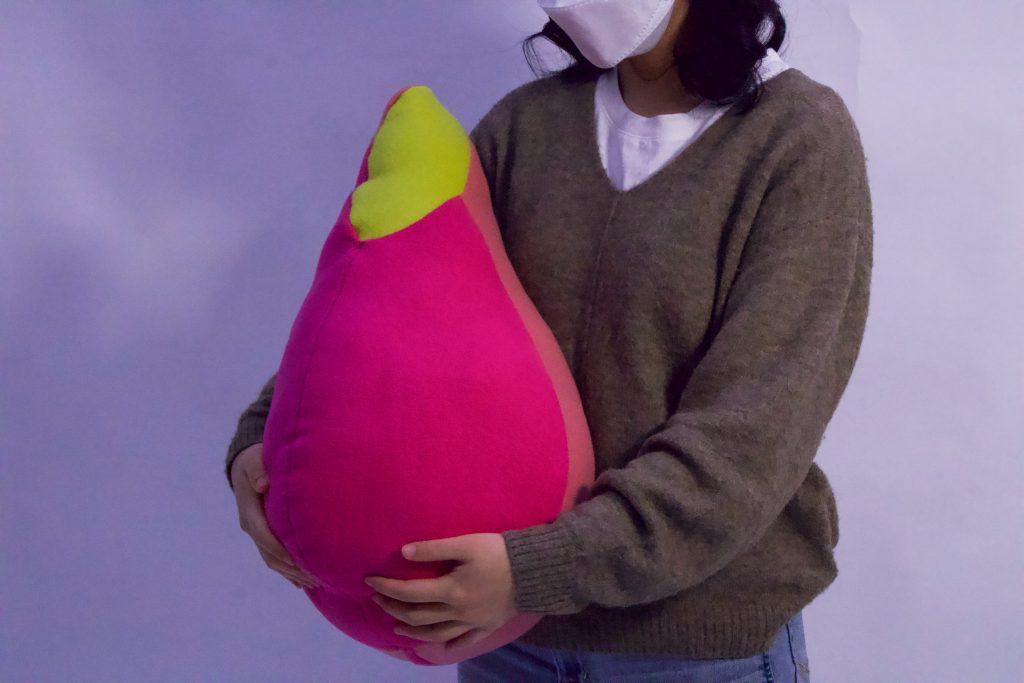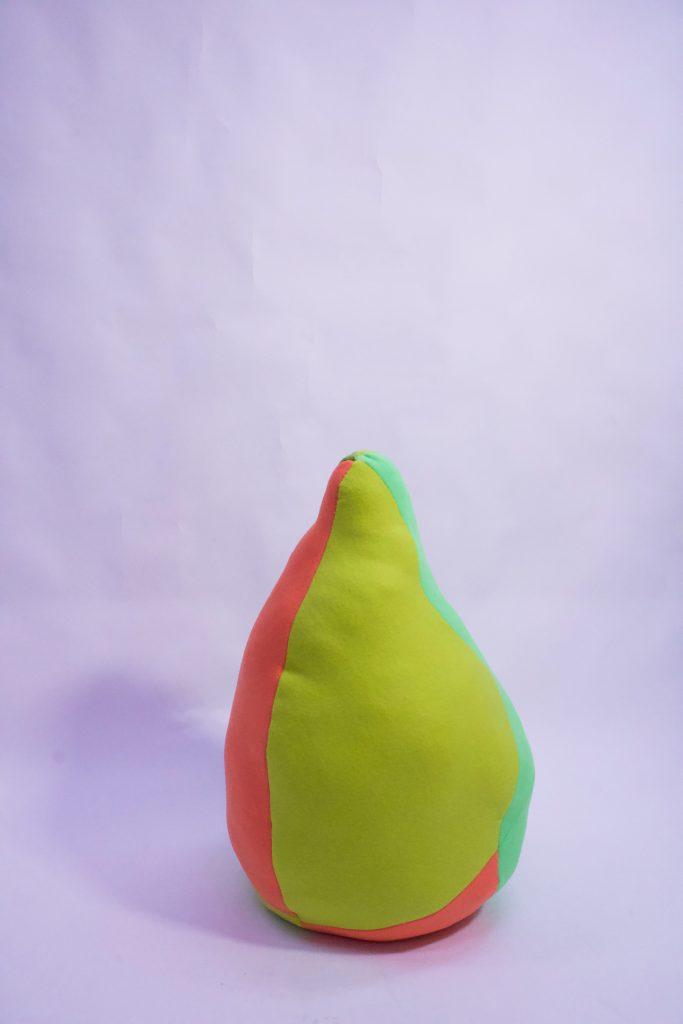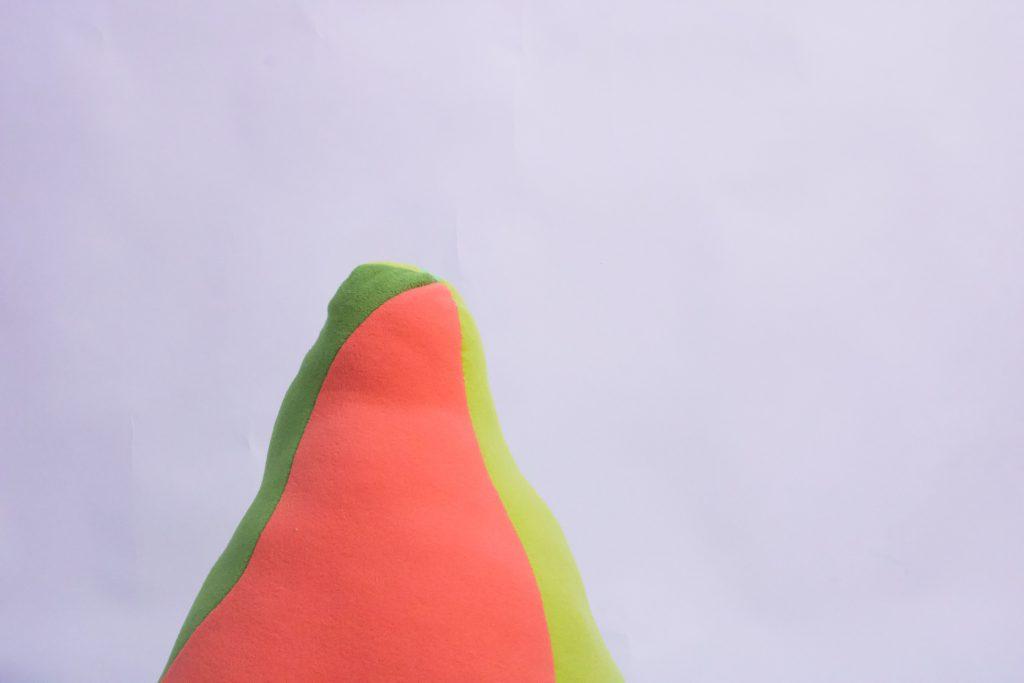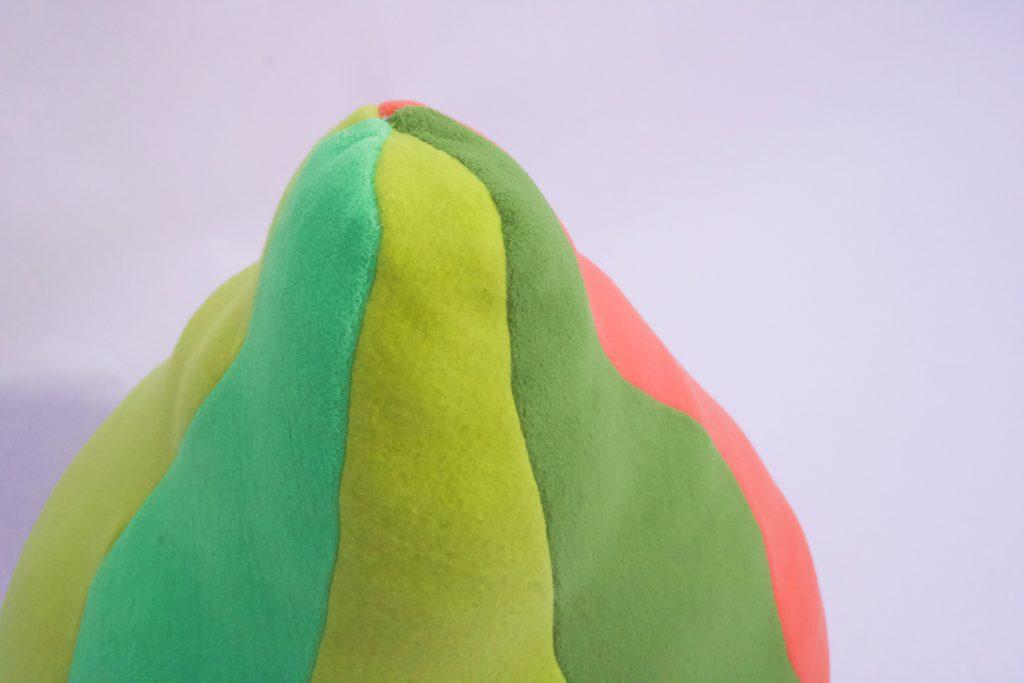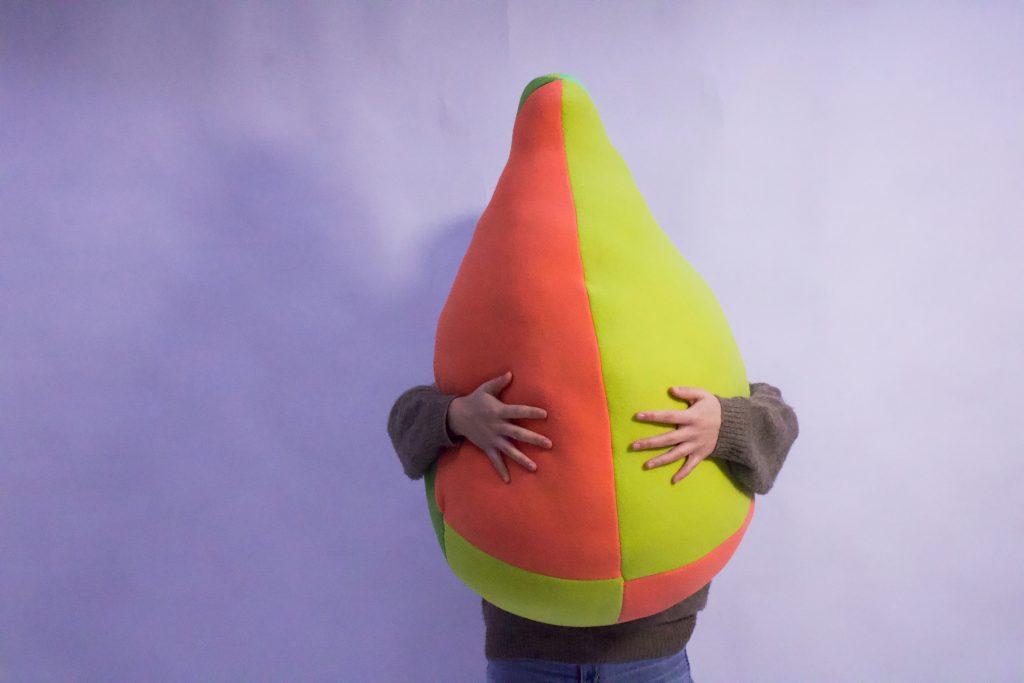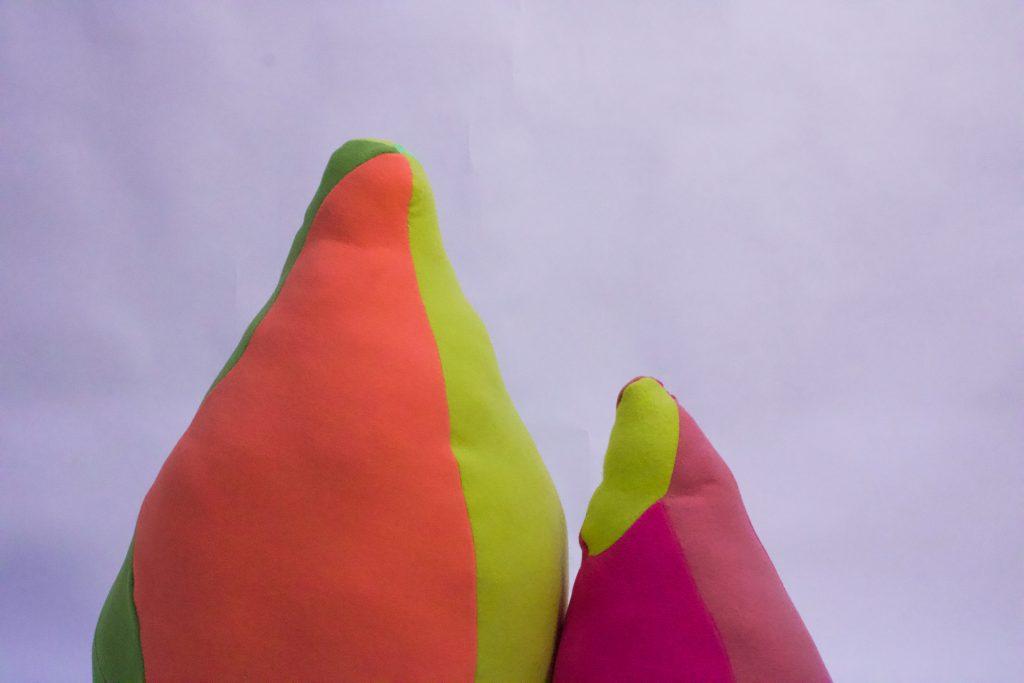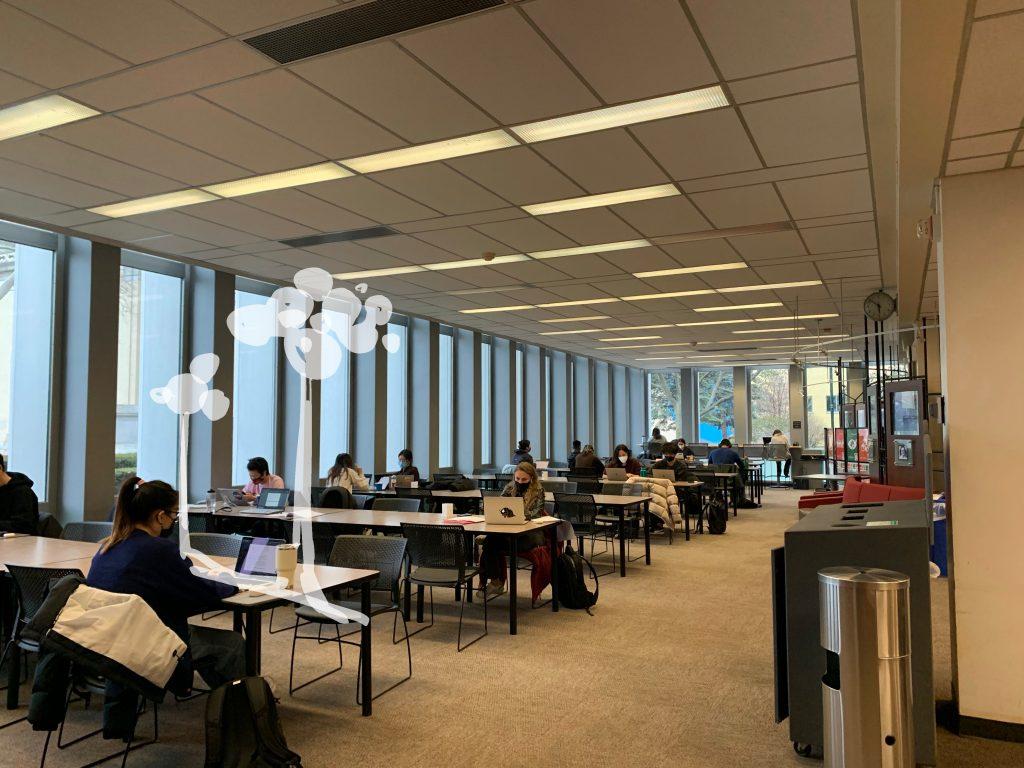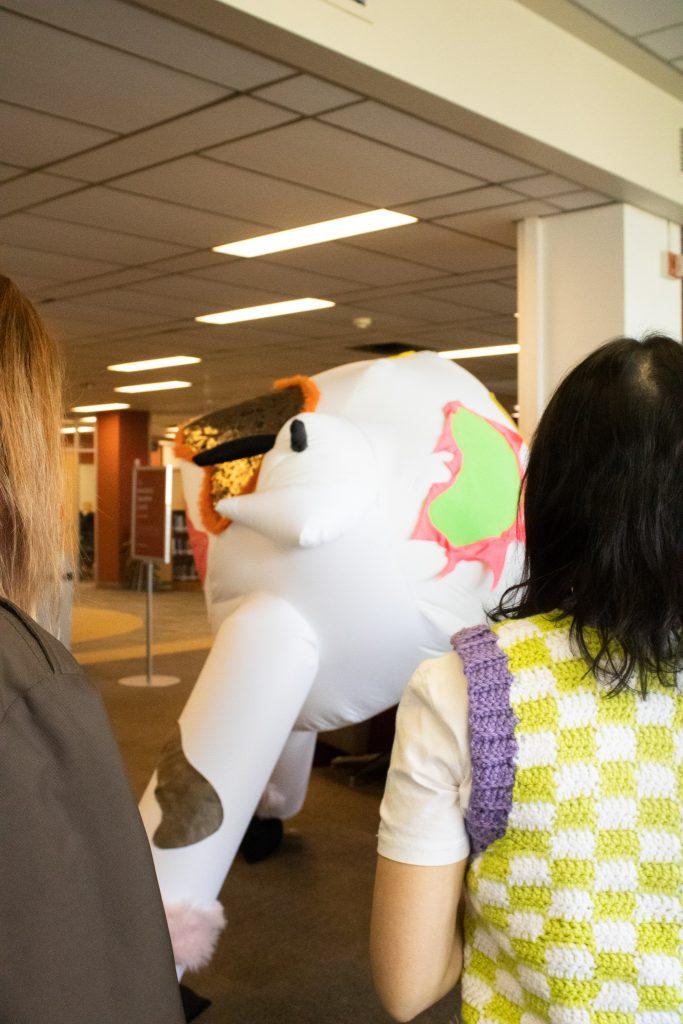
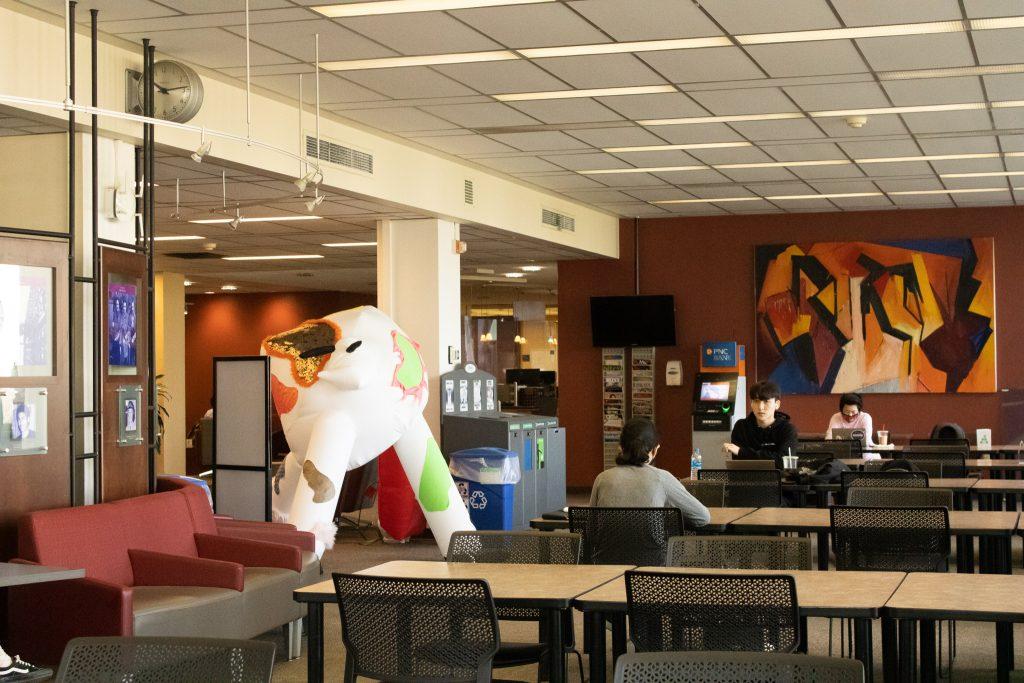
Our object is a cow with decorations. It initially was a teddy bear shape as planned. However, we decided if we were trying to create a childhood-like vibe, we might want something that looks more childish. Then Yiyang drew an abstract and child-like picture which combines Jiyeon’s pear shape with animal shape.
Much of our inflatable, from the sketch, to the cutting of the pieces, to the assembly, was improvised. We intentionally allowed our process to be very organic, responsive, and “un-planned” as we wanted the inflatable to feel as if it were a child’s drawing come to life. Our piece evokes feelings of childlike joy, wonderment, silliness, but also perhaps a bittersweet nostalgia over the way things once were. We wanted to juxtapose this childlike structure in the context of a college library, where students are often stressfully working toward their futures and crossing the threshold between childhood and adulthood.
We free-drew pieces for this object with a rhino file as reference. This step added some unexpected and child-like carelessness into the object. We did not encounter too much difficulty when combining pieces together since we kept it simple. However, when decorating the whole object, we realized that it was nearly impossible to sew decoration pieces onto its surface after we close it. We asked Olivia for help and then glued pieces onto the surface. We then trimmed some outlines to mimic the feeling that they grew from the cow.
If we were to do something different, maybe we would try to sew some pieces before we actually close the shape. And we would also try to figure out how to have the cow standing by itself instead of leaning on sandbags. Because initially we wanted to hang the object and did not think too much about organizing its feet to have it standing.
One good lesson we learned from this project is that having basic or primary form ready earlier. We finished most parts of our object during the spring break and thus we had much more time to develop it further. It was helpful to rehearsal it again and again and build more onto it.

